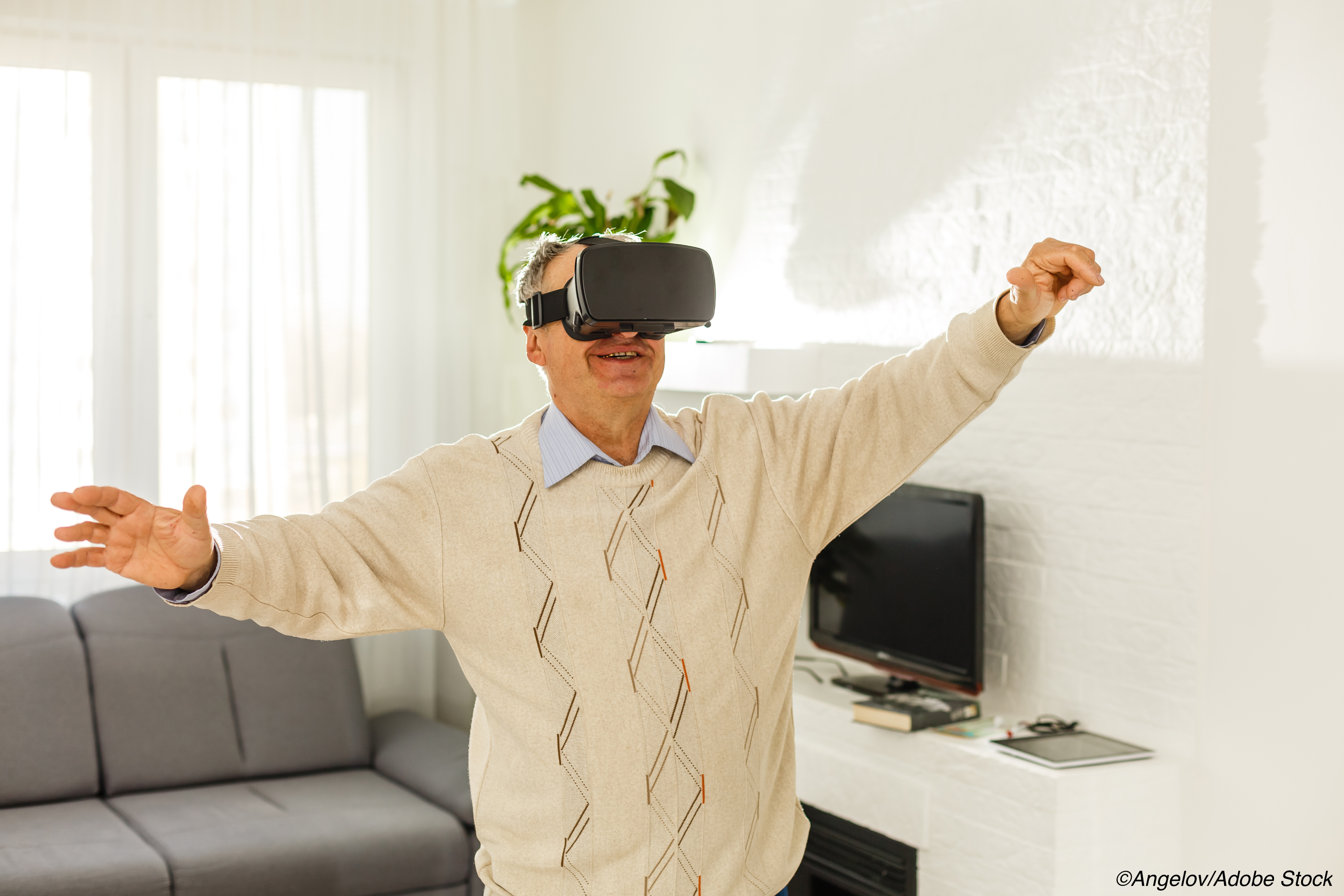Balance training using virtual reality (VR) may be more effective than balance training alone in improving balance in patients with Parkinson’s disease (PD), especially in those with higher postural instability. Improvements in walking speed, however, were not greater with VR training, according to findings published in the Journal of Neurology.
Researchers also found that while these improvements were immediate, none of them were maintained through follow-up.
“One of the possible rehabilitation strategies to improve retention of motor skills is the use of a virtual reality (VR) environment. VR includes technologies or tools or instruments offering an augmented and immediate feedback on the motor performance by promoting the interaction of the participant with a fictional environment via multiple sensory channels. A VR setting might have the potential to exploit and maximize motor learning mechanisms through repetitive and varied practice, motivation and arousal, focus of attention, learning by action observation and problem solving, controlled progression of difficulty, salient and online task-related feedback, immediate knowledge of performance and results,” explained Elisabetta Sarasso, MSc, of the IRCCS San Rafaele Scientific Institute, in Milan, Italy, and colleagues.
They conducted a systematic review and meta-analysis of randomized controlled trials to compare the effects of VR balance training compared with balance training alone to improve balance and mobility in patients with PD with balance and mobility problems.
The primary outcomes included balance as measured by the Berg Balance Scale (BBS), mobility measured via Timed Up and Go (TUG), and walking speed. Secondary outcomes included falls, walking distance, and stability, spatial gait measures, balance confidence, sensory integration ability, motor signs, and quality of life.
VR was defined as “as any tool or instrument that offers augmented and immediate feedback on performance promoting the interaction of the patient with a fictional environment via multiple sensory channels, enabling individualized repetitive practice of motor exercises and stimulating both motor and cognitive processes.”
Balance or mobility training programs were those that included static or dynamic exercises that were focused on controlling body posture, pushing stability limits, weight shifting, or gait.
Researchers only included studies with structured rehabilitation programs; after searching four electronic databases, they identified 22 studies including 901 patients (mean age range: 60-78 years; 39% women), 451 of whom received VR balance training and 450 received balance training alone. Mean Hoehn and Yahr (H&Y) scores ranged from 1 to 3, and mean duration of PD ranged from 4-10 years.
Balance was assessed in 14 studies including 430 patients, and researchers found a significant difference favoring VR balance training compared with balance training (mean difference: 2.09 points; 95% CI: 0.86-3.33; P=0.0009, I2=88%). In one study, balance was measured using MiniBESTest, and improvements occurred in both training groups.
Eight studies assessed mobility with TUG in 236 patients and showed a mean difference of 1.55 seconds (95% CI: 0.04-3.06; P=0.04, I2=93%) in TUG in favor of VR balance training.
Walking speed was assessed in eight trials in 279 patients and showed a nonsignificant mean difference between the two training modalities (mean difference: 0.03; 95% CI: -0.001 to 0.07; P=0.16; I2=0%).
Spatial gait parameters were significantly better in patients engaging in VR balance training, with greater improvements in the Unified Parkinson Disease Rating Scale part III (UPDRS-III) at follow-up. Researchers, however, “found no superiority of VR-BT over [balance training] BT on walking stability and distance, balance confidence, quality of life and sensory integration ability.”
Sarasso and colleagues noted that “[t]he largest differences in treatment effect were shown for patients with a higher risk of falling (i.e., baseline BBS≤37) and greater mobility impairment (i.e. baseline TUG <16 s).”
In the 12 studies that included follow-up evaluations, researchers reported that no estimated effects were maintained for any outcome.
Sarasso and colleagues added a caution about patient inclusion in VR balance training.
“As we previously mentioned, a potential strength of VR is that it can be used at home, but it is very important to detect in which patients the home-based training could be potentially harmful because of the high exposure to risk of fall. Indeed, it is important to remember that a successful training should be challenging and, for this reason, supervision can be important in those patients at high risk of fall. Determining the minimum ability level of patients to avoid potentially harmful effects (i.e., falls) seems an appropriate approach,” they wrote.
“To conclude, this review supports the use of VR-BT relative to BT to improve balance in PD patients. The best candidates for such a treatment appear to be patients with more severe balance deficits at baseline (BBS≤37), who could achieve clinically relevant balance improvements (MD 4.89 with moderate certainty of evidence according to GRADE),” they added.
Study limitations include the overall quality of the included studies, a high overall risk of bias, small sample size, heterogeneity of outcomes, and lack of descriptions of the exercises used.
Sarasso and colleagues also commented on the lack of data on falls.
“It is quite unexpected that only three studies assessed a number of falls before and after treatment if we consider the relevance of this outcome and its potential impact on quality of life, hospitalization and the potential economic consequences. Moreover, these studies assessed falls over different periods (1 month, 6 months, etc.), thus providing incomparable information,” they wrote.
-
Virtual reality balance training (BT) is more effective than BT alone for improving balance in PD subjects immediately after training.
-
Improvements were most pronounced in patients with PD who had more severe balance deficits at baseline.
Liz Meszaros, Deputy Managing Editor, BreakingMED™
This study was funded by the Italian Ministry of Health.
Sarasso reported no disclosures.
Cat ID: 37
Topic ID: 82,37,730,37,192,925



